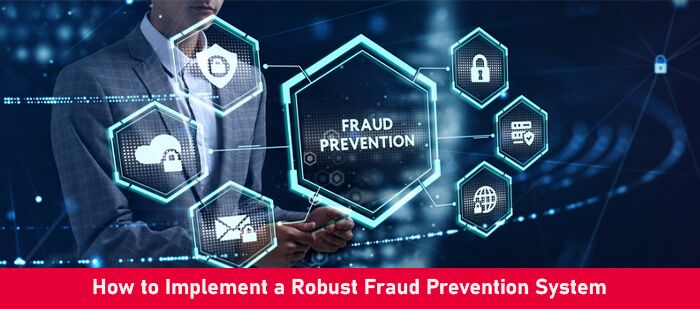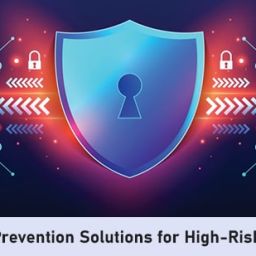
Introduction to Systems for Preventing Fraud
In today’s digital landscape, businesses must confront an ever-growing variety of challenges, with fraud being a significant concern. Establishing a strong fraud prevention system is essential for protecting your company’s resources, maintaining its reputation, and securing customer trust. The best systems are designed not only to combat external threats but also to strengthen internal processes, fostering a seamless and secure operation.
A fraud prevention system acts as a protective barrier, constantly monitoring for suspicious activities and flagging potential risks before they escalate into major issues. By integrating advanced technologies such as artificial intelligence and machine learning, these systems can adapt to new and evolving threats, offering businesses an agile and responsive defense mechanism.
Businesses across various industries face distinct fraud risks, from credit card fraud in e-commerce to identity theft in banking. Tailoring a prevention system to address these specific threats is crucial. Advanced features such as real-time monitoring and customizable alert systems allow businesses to set parameters that are unique to their operational needs. This level of customization ensures that the system remains effective even as the business grows and changes.
Another key aspect of a robust fraud prevention system is its ability to integrate seamlessly with existing software. This ensures minimal disruption to daily operations while maximizing the system’s efficiency. Comprehensive reporting and analytics features provide valuable insights, helping businesses understand patterns and make informed decisions to bolster their defenses further.
Investing in training and resources is also vital. Staff should be well-versed in recognizing potential fraud attempts and knowing how to respond swiftly. By equipping your team with the necessary knowledge and tools, you enhance the overall effectiveness of your fraud prevention efforts, creating a more secure environment for both your business and your customers.
Some Related Blogs
- Fraud Prevention Best Practices Every Merchant Should Know
- Why Fraud Prevention is Critical for E-commerce Merchants
- Reducing Fraud with Chargeback Prevention Solutions
- How to Build an Effective Chargeback Prevention Strategy
Assessing Your Business Requirements
To implement a fraud prevention system effectively, start by identifying the specific risks your industry faces. Online retailers, for example, often deal with credit card fraud, while financial institutions may encounter issues like identity theft. Recognizing these risks helps you create a strategy tailored to your needs.
Next, assess the resources your business can dedicate to fraud prevention. This includes budgeting for software, staffing, and training programs. Smaller businesses might choose more affordable solutions that offer essential protections, whereas larger enterprises might invest in advanced systems with multiple features. Finding the right balance between cost and protection is crucial for a sustainable approach.
Consider your existing infrastructure and how a new system can integrate smoothly with it. This minimizes operational disruptions while maximizing efficiency. Integration capabilities with your current software should be a priority to ensure seamless operation.
Staff training is another key component. Employees must be equipped to recognize and respond to potential threats effectively. Regular workshops and up-to-date resources can keep your team informed about the latest trends and best practices in fraud prevention.
Finally, determine the level of customization you require. Some businesses benefit from systems that allow for tailored rules and alerts based on specific risk factors. This ensures that your defenses remain robust even as your business evolves.
By thoroughly assessing your business requirements, you can select and implement a fraud prevention system that offers optimal protection and aligns with your operational needs.
Selecting the Appropriate Tools and Technologies
With a clear understanding of your business requirements, you can now delve into the array of available tools and technologies. Comparing popular fraud prevention tools is essential to finding the perfect fit for your organization. Consider machine learning-based solutions that evolve to counter new threats and rule-based systems that operate on predefined criteria to flag suspicious activities.
![]()
Email us anytime!
Email customer service 24/7
![]()
Call us anytime!
Reach customer care 24/7 at +1 (888) 901-8653
Key features to look for include real-time monitoring, which provides immediate alerts for any irregularities. An effective alert system ensures that your team is quickly notified of potential risks, allowing for swift action. Integration capabilities with your current software are also crucial, as they allow for a seamless operation without disrupting your existing workflows.
Customizable rules are another valuable feature, enabling businesses to set specific criteria based on unique risk factors. This customization allows for a more tailored approach, ensuring the system adapts to the particular needs of your organization. Comprehensive reporting and analytics are vital for gaining insights into fraud patterns and making informed decisions. These tools provide data that can help you understand trends and adjust your strategies accordingly.
It’s also worthwhile to explore multi-layered solutions that combine various technologies for enhanced protection. This could include combining machine learning with behavioral analysis or using advanced encryption alongside robust authentication methods. A multi-layered approach can offer a more comprehensive defense against diverse threats.
By focusing on these key features and technologies, you can equip your business with a powerful and adaptable fraud prevention system. This ensures that you are prepared to counteract both current and emerging threats effectively.
Deploying the Fraud Prevention System
Deploying a fraud prevention system requires careful planning and execution. Start by thoroughly testing the system to ensure it functions correctly within your existing infrastructure. Collaborate with your IT team to address any compatibility issues and to establish necessary connections with other applications.
Once the technical setup is complete, focus on staff training. Employees should be familiar with how the system operates and how to interpret alerts. Provide ongoing education through workshops and resources to keep them up-to-date on the latest fraud trends and response strategies.
Regular system maintenance is vital to ensure continued effectiveness. Schedule periodic reviews to evaluate the system’s performance and to make updates that address new threats. Consider incorporating feedback from your team to refine system rules and alerts, ensuring they remain relevant to your operational needs.
Documentation is another crucial aspect. Maintain comprehensive records of the system’s configuration, updates, and incidents of fraud. This information is invaluable for auditing purposes and for making data-driven decisions to enhance your defenses.
Finally, consider conducting simulated fraud attempts to test the system and your team’s response. These drills can reveal potential weaknesses and provide an opportunity to improve both the technology and the human element of your fraud prevention strategy. By staying proactive and vigilant, you can ensure your fraud prevention system remains robust and adaptable to new challenges.




